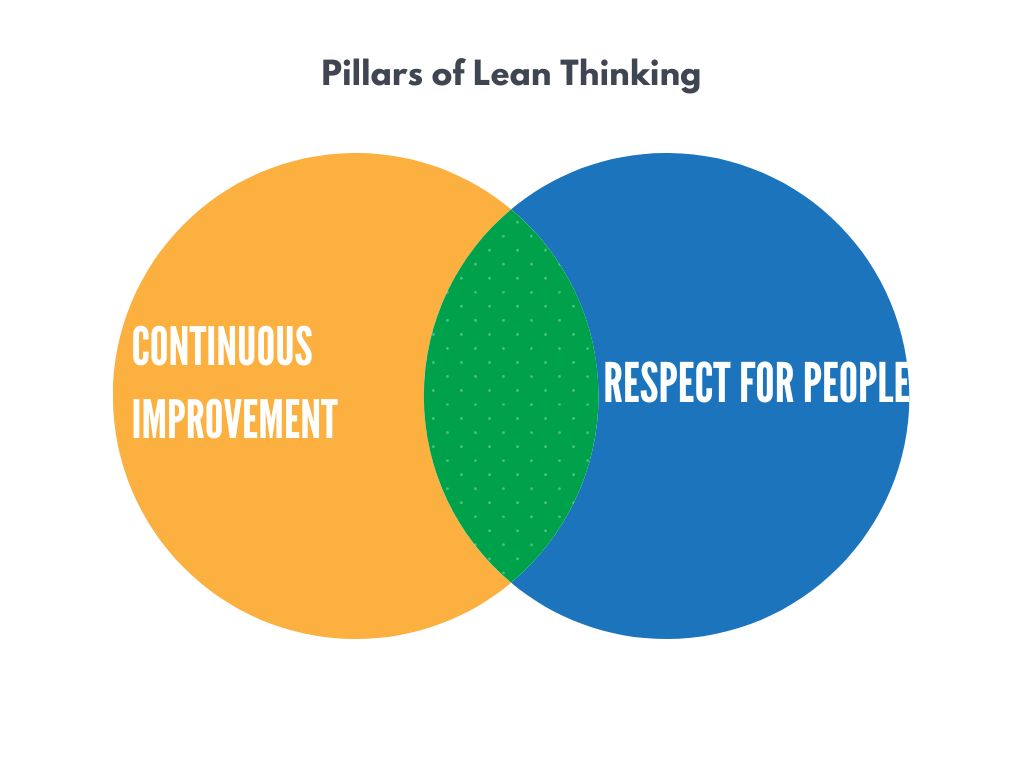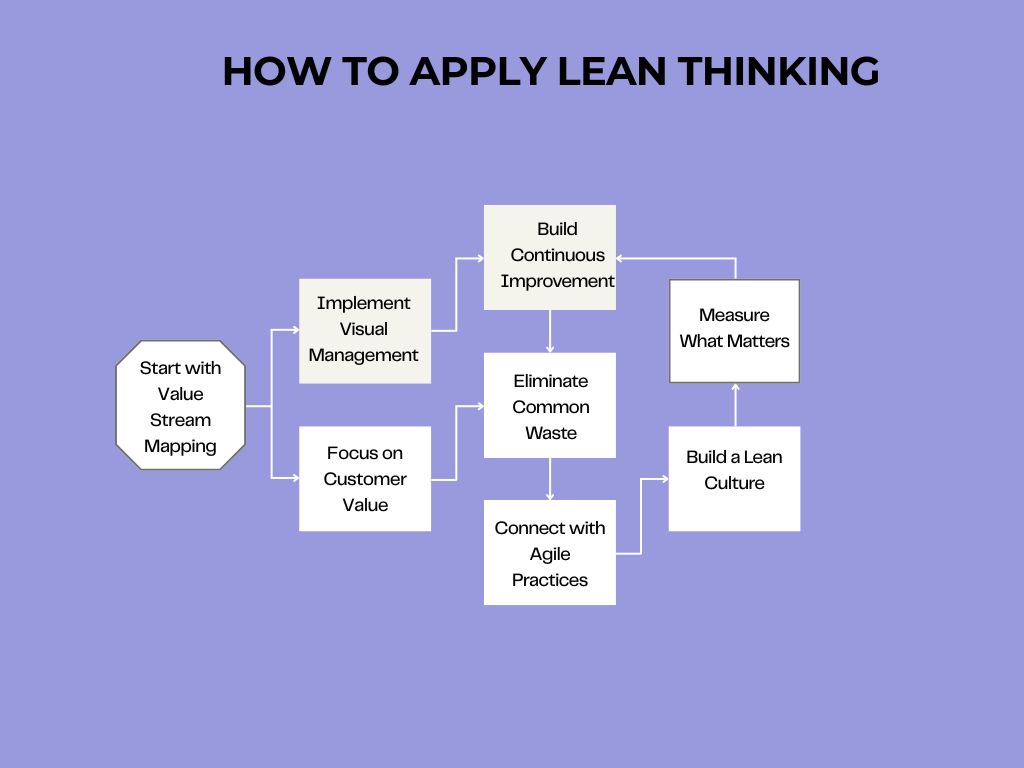.png)
Has it ever crossed your mind why some product teams struggle with backlogs and frustrated stakeholders, while others effortlessly ship features that customers love? The secret lies in how they think about value, waste, and the flow of work through their organization. You can find this in a principle known as “Lean Thinking. It's a game-changing approach that can transform how you manage products and lead teams. Let’s find out more about what lean thinking is, its five principles, and how you can apply it in product management.
Lean thinking is a business philosophy that was originally developed in lean manufacturing by the Toyota Production System. It has revolutionized how companies build cars, software, and even products. At its core, lean thinking principle is simple. Just focus relentlessly on what creates value to customers and eliminate everything else.
As a product manager, you're probably thinking, "Great, another methodology to learn." But lean thinking and practice is not about adding more processes to your already packed schedule. It revolves around a fundamental question: "Does this activity directly add value for my customers, or does it support someone who does?" If the answer is no, you've identified waste that's slowing down your team and frustrating your users.
The Lean Enterprise Institute has documented countless success stories where companies have dramatically improved their performance by adopting lean principles. Companies that adopt lean management principles often see 25–30% cost reductions and 35% increases in productivity during implementation

The five principles of lean form the backbone of every successful lean transformation. Here are each principle of lean thinking and how to apply them:
The first of the five key principles requires you to identify value from your customer's perspective, not your internal viewpoint. Most product managers define value based on what they think is cool, what the CEO wants, or what competitors are doing. But lean management principles demand that customer value can only be defined by customers themselves.
This means getting out of the building and talking to real users. When you focus on value from their perspective, you'll stop building features that nobody uses. We've seen teams waste months on "amazing" features that users completely ignored because they never validated what customers needed.
Value stream mapping involves documenting every step your product ideas go through. Here, you're creating a visual representation of how work flows through your organization.
So, you need to start with a user need and trace it through your entire process. How does it move from your backlog to development? What approvals does it need? Where does work sit waiting? Mapping the value stream reveals hidden bottlenecks that slow you down. Most product managers are shocked when they see their value stream mapped out.
Once you've mapped your value stream, you'll spot where work gets stuck. Maybe developers are waiting for designs, or QA is overwhelmed while developers sit idle. These bottlenecks prevent continuous flow and frustrate everyone involved.
The goal is to make work flow smoothly toward the customer without getting trapped in handoff hell. Kanban boards help visualize work and identify when too much is piling up in one stage. When you optimize the flow, features move more quickly from idea to the customer's hands.
Instead of pushing features based on roadmaps created six months ago, lean organizations create pull systems. Work gets started because customers need it, not because it was planned in advance. This doesn't mean throwing away your roadmap. It means staying flexible enough to respond to real customer needs as they emerge.
The final principle emphasizes that lean principles create a culture of continuous improvement where getting better becomes part of your team's DNA. You're not trying to fix everything at once, but you're making small, consistent improvements that compound over time.
Continuous improvement means regularly asking your team: "What slowed us down this sprint?" "Where did we identify wasteful activities in their process?" and "How can we deliver value more effectively next time?”

Beyond the five lean principles, there are two fundamental pillars of lean that support everything else. Understanding these pillars helps you build a strong foundation for implementing lean in your product management practice. They include:
Continuous improvement means constantly looking for ways to eliminate waste and deliver value more effectively. This practice of continuous improvement should become a routine. You need to always ask "How can we do this better?" after every sprint or release.
One of the most important pillars of lean is respect for people. This is about recognizing that your developers, designers, and team members closest to the work often have the best ideas for improving it. Usually, lean management gives teams autonomy to solve problems and make decisions.
Instead of micromanaging every detail, you create an environment where people feel empowered to suggest improvements and take ownership of outcomes. Normally, continuous improvement and respect for people go hand in hand.

Here's how to apply lean principles to your daily product management work:
Begin by mapping one feature's journey from idea to customer. Then you document every step, handoff, and approval. This reveals opportunities to optimize your process and eliminate waste. Fortunately, tools like Productlogz can help visualize your workflow, capture team input, and streamline the flow of work so you can optimize faster.
Kanban boards are essential lean tools for product managers. They help you visualize work, limit work in progress, and maintain a smooth flow of work. When everyone can see what's in progress, it's easier to spot problems and optimize resource allocation.
Every product decision should start with the question: "Does this add value for customers?" Lean thinking demands ruthless focus on customer value and elimination of everything else. This means regularly talking to customers, validating assumptions, and being willing to kill features that don't deliver value.
The practice of continuous improvement should become as routine as your daily standups. Developing a lean mindset means always asking, "How can we do this better next time?”. So, make it a regular part of your routine, and hold retrospectives after each sprint or release. Also, ask your team to identify wasteful activities and suggest solutions.
You can lean effectively by spotting these common wastes in product development:
If you're already doing agile development, you're probably using lean concepts without knowing it. Both approaches emphasize customer collaboration, working software, and responding to change. Lean management principles and agile practices complement each other beautifully.
Lean enterprise organizations measure different things than traditional companies. Instead of just tracking features delivered, focus on metrics that show value to the customer. Teams that drive continuous improvement based on these metrics naturally start delivering value more effectively.
Adopting lean thinking requires building a lean culture where improvement becomes everyone's responsibility. Lean teams don't wait for permission to make things better. You can start by introducing lean practices gradually. Maybe begin with mapping your current process or implementing a simple Kanban board. As your team sees the benefits, they'll embrace the lean mindset.
The most impactful product managers aren’t the ones doing more, but the ones doing what matters. Lean thinking gives you that edge. It teaches you to slow down, ask better questions, and lead with intention. So challenge the noise, cut the clutter, and build with purpose. You know what happens when you lead with clarity and a lean mindset? You don’t just manage products, you transform them.
Start collecting meaningful feedback without any set-up hassles